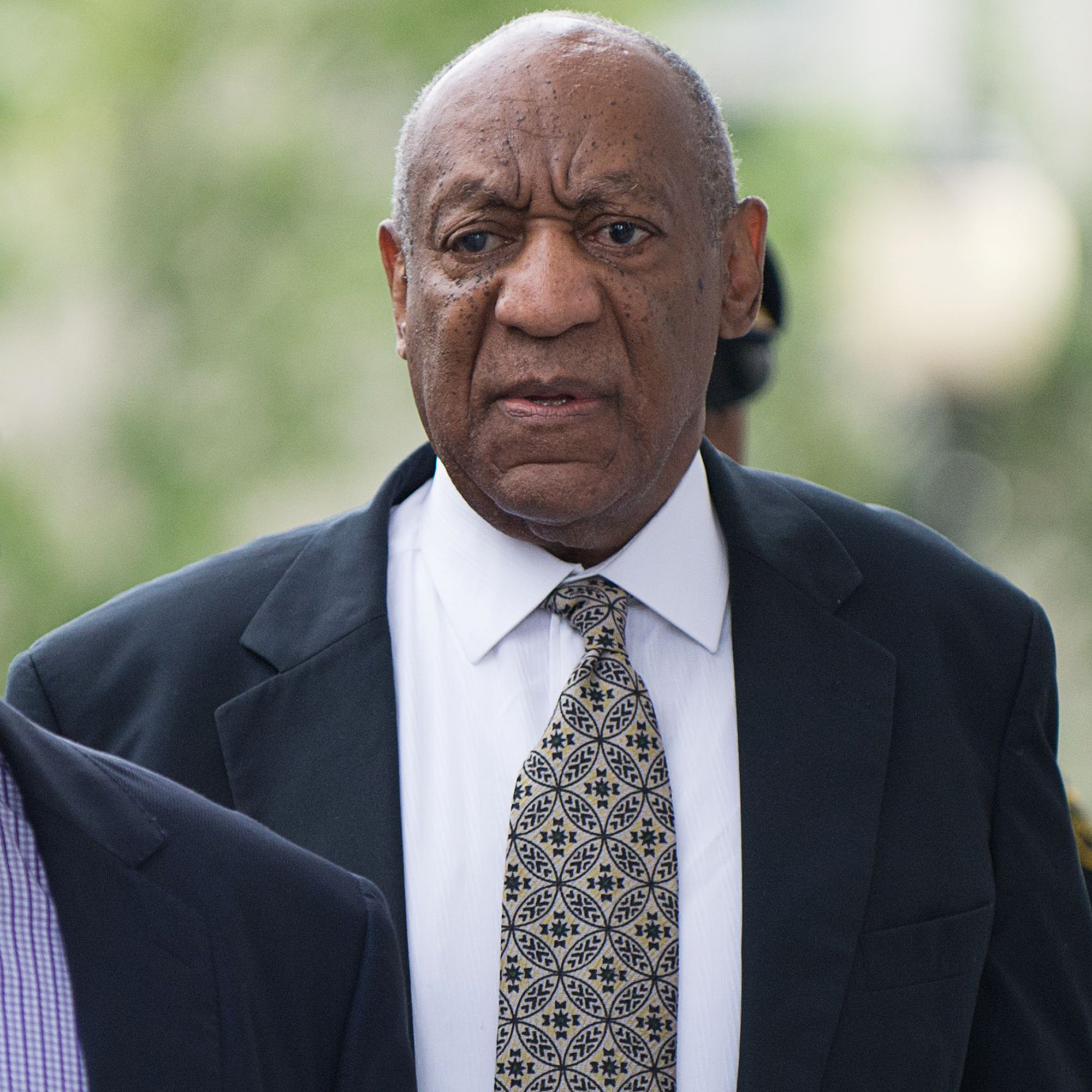Entertainment
Bill Cosby Denies Singer Morganne Picard’s Sexual Assault Lawsuit Claims on August 5, 2023 at 10:03 pm Us Weekly

Bill Cosby Tracie Van Auken/EPA/Shutterstock
Bill Cosby is being accused of sexual assault by another woman.
Singer Morganne Picard alleged that Cosby, now 86, drugged and raped her after they met in 1987, according to a new lawsuit filed in New York City on Friday, August 4, which The Daily Beast obtained.
Picard claimed that the disgraced comedian invited her to the set of his The Cosby Show “under the pretense” of helping her career as an aspiring singer. She alleged in the court documents that Cosby provided her with beverages and “insisted and encouraged” her to drink them on multiple occasions. Picard believed the drinks had been drugged because she would black out shortly after ingesting them. In one instance, Picard allegedly woke up naked in a hotel room “with soreness in her vagina,” which led her to believe that she had been raped.
Picard also named NBCUniversal Media, Kaufman Astoria Studios, Astoria Studios Limited Partnership II, and The Carsey-Werner Company in her suit for failing to “investigate, reprimand, supervise” or “try to stop Cosby.”
Cosby, for his part, has denied the accusations through rep Andrew Wyatt, who called out the accusers for “fueling false narratives for the potential of media fame and greed.” Us Weekly has reached out for comment.
“I am reminded of a photo a man hanging from a tree burning, as the plantation owner hosted a barbecue and party for the slaves as this Black Man was being roasted alive, without the sheer facts of any evidence, proof, truth or facts,” Wyatt told The Daily Beast in a statement on Friday.
Cosby was previously accused of sexual misconduct by over 60 women in 2015, many of whom claimed that he drugged and raped them. Cosby’s first sexual assault lawsuit, of which he pled not guilty, ended in a mistrial in 2017 after the jury failed to reach a unanimous decision. Andrea Constand, who first claimed in 2005 that Cosby raped her one year prior, filed a lawsuit in 2018. Cosby was found guilty and sentenced to three to 10 years in prison and was also ordered to undergo a lifetime of counseling and appear on a sex offender registry. After serving two years behind bars, Cosby was released when his conviction was overturned.
Us Weekly confirmed in June 2021 that the Pennsylvania high court found an agreement with a previous prosecutor that prevented Cosby from being charged. He was released later that month, continuing to assert that he was not guilty of misconduct.
Morganne Picard Courtesy of Morganne Picard/Instagram
“I have never changed my stance nor my story,” Cosby tweeted upon his release. “I have always maintained my innocence. Thank you to all my fans, supporters and friends who stood by me through this ordeal. Special thanks to the Pennsylvania Supreme Court for upholding the rule of law. #BillCosby.”
The next year, Cosby was found civilly liable for sexually assaulting Judy Huth in 1975, who was a minor at the time and claimed that she was molested by Cosby during a party at the Playboy mansion. Huth was awarded $500,000 in damages after the June 2022 trial.
Despite the outcome, Cosby’s publicist and crisis manager told Us that the verdict was a “huge victory” for their team. “They are looking for millions of dollars,” the rep said in a statement at the time. “That amount [awarded] will not cover the legal bills and we will be appealing that matter. However, Mr. Cosby will not be paying punitive damages.”
If you or anyone you know has experienced sexual assault, call the National Sexual Assault Telephone Hotline at 1-800-656-4673 for confidential support.
Bill Cosby is being accused of sexual assault by another woman. Singer Morganne Picard alleged that Cosby, now 86, drugged and raped her after they met in 1987, according to a new lawsuit filed in New York City on Friday, August 4, which The Daily Beast obtained. Picard claimed that the disgraced comedian invited her
Us Weekly Read More
Entertainment
What We Can Learn Inside 50 Cent’s Explosive Diddy Documentary: 5 Reasons You Should Watch

50 Cent’s new Netflix docuseries about Sean “Diddy” Combs is more than a headline-grabbing exposé; it is a meticulous breakdown of how power, celebrity, and silence can collide in the entertainment industry.
Across its episodes, the series traces Diddy’s rise, the allegations that followed him for years, and the shocking footage and testimonies now forcing a wider cultural reckoning.

1. It Chronicles Diddy’s Rise and Fall – And How Power Warps Reality
The docuseries follows Combs from hitmaker and business icon to a figure facing serious criminal conviction and public disgrace, mapping out decades of influence, branding, and behind-the-scenes behavior. Watching that arc shows how money, fame, and industry relationships can shield someone from scrutiny and delay accountability, even as disturbing accusations accumulate.

2. Never-Before-Seen Footage Shows How Narratives Are Managed
Exclusive footage of Diddy in private settings and in the tense days around his legal troubles reveals how carefully celebrity narratives are shaped, even in crisis.
Viewers can learn to question polished statements and recognize that what looks spontaneous in public is often the result of strategy, damage control, and legal calculation.
3. Survivors’ Stories Highlight Patterns of Abuse and Silence
Interviews with alleged victims, former staff, and industry insiders describe patterns of control, fear, and emotional or physical harm that were long whispered about but rarely aired in this detail. Their stories underline how difficult it is to speak out against a powerful figure, teaching viewers why many survivors delay disclosure and why consistent patterns across multiple accounts matter.
4. 50 Cent’s Approach Shows Storytelling as a Tool for Accountability
As executive producer, 50 Cent uses his reputation and platform to push a project that leans into uncomfortable truths rather than protecting industry relationships. The series demonstrates how documentary storytelling can challenge established power structures, elevate marginalized voices, and pressure institutions to respond when traditional systems have failed.
5. The Cultural Backlash Reveals How Society Handles Celebrity Accountability
Reactions to the doc—ranging from people calling it necessary and brave to others dismissing it as a vendetta or smear campaign—expose how emotionally invested audiences can be in defending or condemning a famous figure. Watching that debate unfold helps viewers see how fandom, nostalgia, and bias influence who is believed, and why conversations about “cancel culture” often mask deeper questions about justice and who is considered too powerful to fall.
Entertainment
South Park’s Christmas Episode Delivers the Antichrist

A new Christmas-themed episode of South Park is scheduled to air with a central plot in which Satan is depicted as preparing for the birth of an Antichrist figure. The premise extends a season-long narrative arc that has involved Satan, Donald Trump, and apocalyptic rhetoric, positioning this holiday episode as a culmination of those storylines rather than a stand‑alone concept.
Episode premise and season context
According to published synopses and entertainment coverage, the episode frames the Antichrist as part of a fictional storyline that blends religious symbolism with commentary on politics, media, and cultural fear. This follows earlier Season 28 episodes that introduced ideas about Trump fathering an Antichrist child and tech billionaire Peter Thiel obsessing over prophecy and end‑times narratives. The Christmas setting is presented as a contrast to the darker themes, reflecting the series’ pattern of pairing holiday imagery with controversial subject matter.
Public and political reactions
Coverage notes that some figures connected to Donald Trump’s political orbit have criticized the season’s portrayal of Trump and his allies, describing the show as relying on shock tactics rather than substantive critique. Commentators highlight that these objections are directed more at the depiction of real political figures and the show’s tone than at the specific theology of the Antichrist storyline.
At the time of reporting, there have not been widely reported, detailed statements from major religious leaders focused solely on this Christmas episode, though religion-focused criticism of South Park in general has a long history.
Media and cultural commentary
Entertainment outlets such as The Hollywood Reporter, Entertainment Weekly, Forbes, Slate, and USA Today describe the Antichrist arc as part of South Park’s ongoing use of Trump-era and tech-world politics as material for satire.
Viewer guidance and content advisory
South Park is rated TV‑MA and is intended for adult audiences due to strong language, explicit themes, and frequent use of religious and political satire. Viewers who are sensitive to depictions of Satan, the Antichrist, or parodies involving real political figures may find this episode particularly objectionable, while others may view it as consistent with the show’s long‑running approach to controversial topics. As with previous episodes, individual responses are likely to vary widely, and the episode is best understood as part of an ongoing satirical series rather than a factual or theological statement.
Entertainment
Sydney Sweeney Finally Confronts the Plastic Surgery Rumors

Sydney Sweeney has decided she is finished watching strangers on the internet treat her face like a forensic project. After years of side‑by‑side screenshots, “then vs now” TikToks, and long comment threads wondering what work she has supposedly had done, the actor is now addressing the plastic surgery rumors directly—and using them to say something larger about how women are looked at in Hollywood and online.

Growing Up on Camera vs. “Before and After” Culture
Sweeney points out that people are often mistaking normal changes for procedures: she grew up on camera, her roles now come with big‑budget glam teams, and her body has shifted as she has trained, aged, and worked nonstop. Yet every new red‑carpet photo gets folded into a narrative that assumes surgeons, not time, are responsible. Rather than walking through a checklist of what is “real,” she emphasizes how bizarre it is that internet detectives comb through pores, noses, and jawlines as if they are owed an explanation for every contour of a woman’s face.
The Real Problem Isn’t Her Face
By speaking up, Sweeney is redirecting the conversation away from her features and toward the culture that obsesses over them.
She argues that the real issue isn’t whether an actress has had work done, but why audiences feel so entitled to dissect her body as public property in the first place.
For her, the constant speculation is less about curiosity and more about control—another way to tell women what they should look like and punish them when they do not fit. In calling out that dynamic, Sweeney isn’t just defending herself; she is forcing fans and followers to ask why tearing apart someone else’s appearance has become such a popular form of entertainment.

 Entertainment4 weeks ago
Entertainment4 weeks agoColombia’s ‘Doll’ Arrest: Police Say a 23-Year-Old Orchestrated Hits, Including Her Ex’s Murder

 Entertainment4 weeks ago
Entertainment4 weeks agoHow The Grinch Became The Richest Christmas Movie Ever

 Entertainment4 weeks ago
Entertainment4 weeks agoMiley Cyrus Is Engaged to Maxx Morando

 Business4 weeks ago
Business4 weeks agoLuana Lopes Lara: How a 29‑Year‑Old Became the Youngest Self‑Made Woman Billionaire

 Film Industry3 weeks ago
Film Industry3 weeks agoDisney Brings Beloved Characters to ChatGPT After $1 Billion OpenAI Deal

 Entertainment4 weeks ago
Entertainment4 weeks agoMariah Carey’s One Holiday Hit Pays her $3.3 Million a Year

 Film Industry3 weeks ago
Film Industry3 weeks agoNetflix Got Outbid: Paramount Drops a $108 Billion Cash Bomb on Warner Bros.

 Entertainment4 weeks ago
Entertainment4 weeks agoAnne Hathaway Just Turned Her Instagram Bio Into a 2026 Release Calendar



























